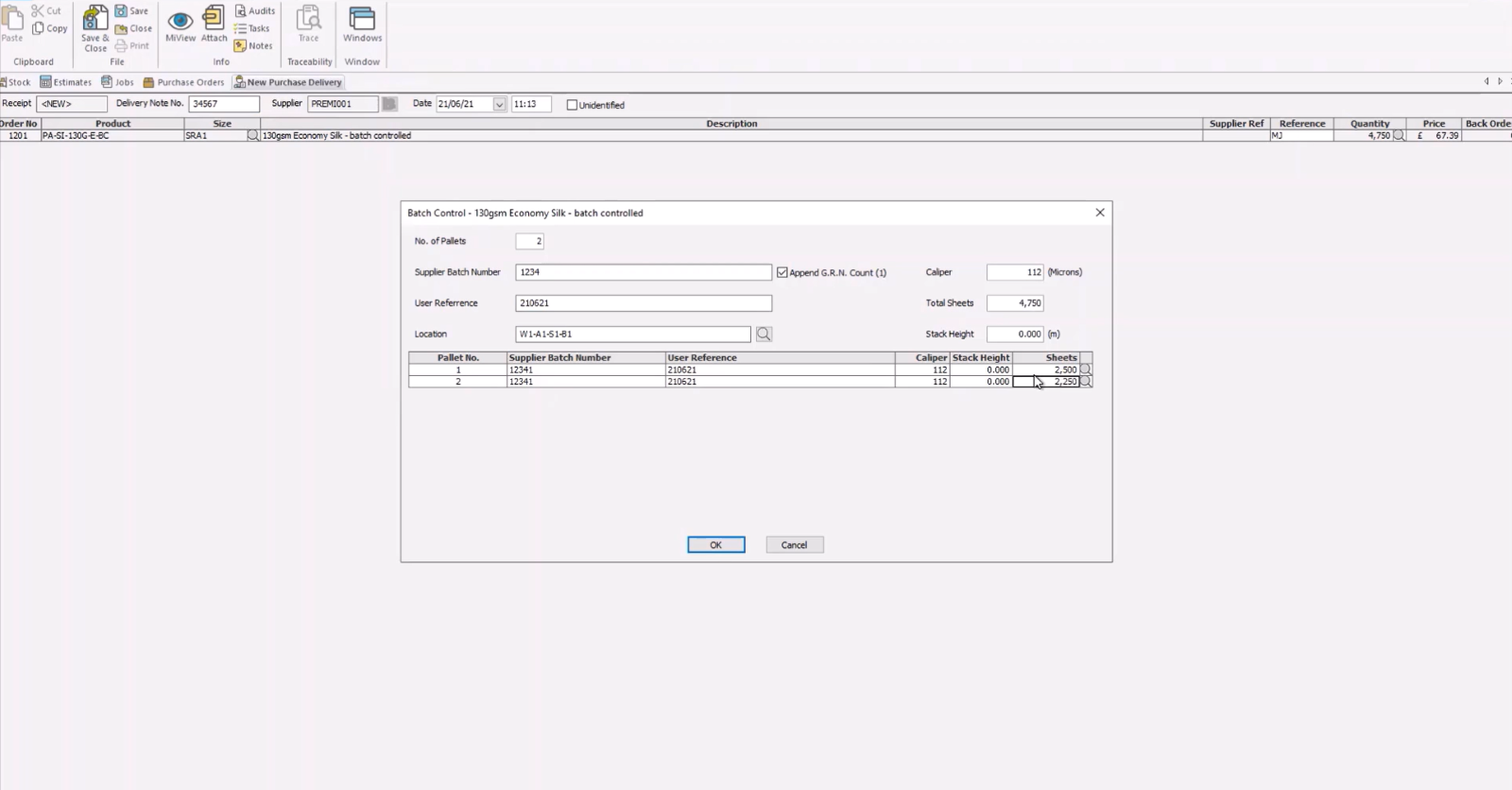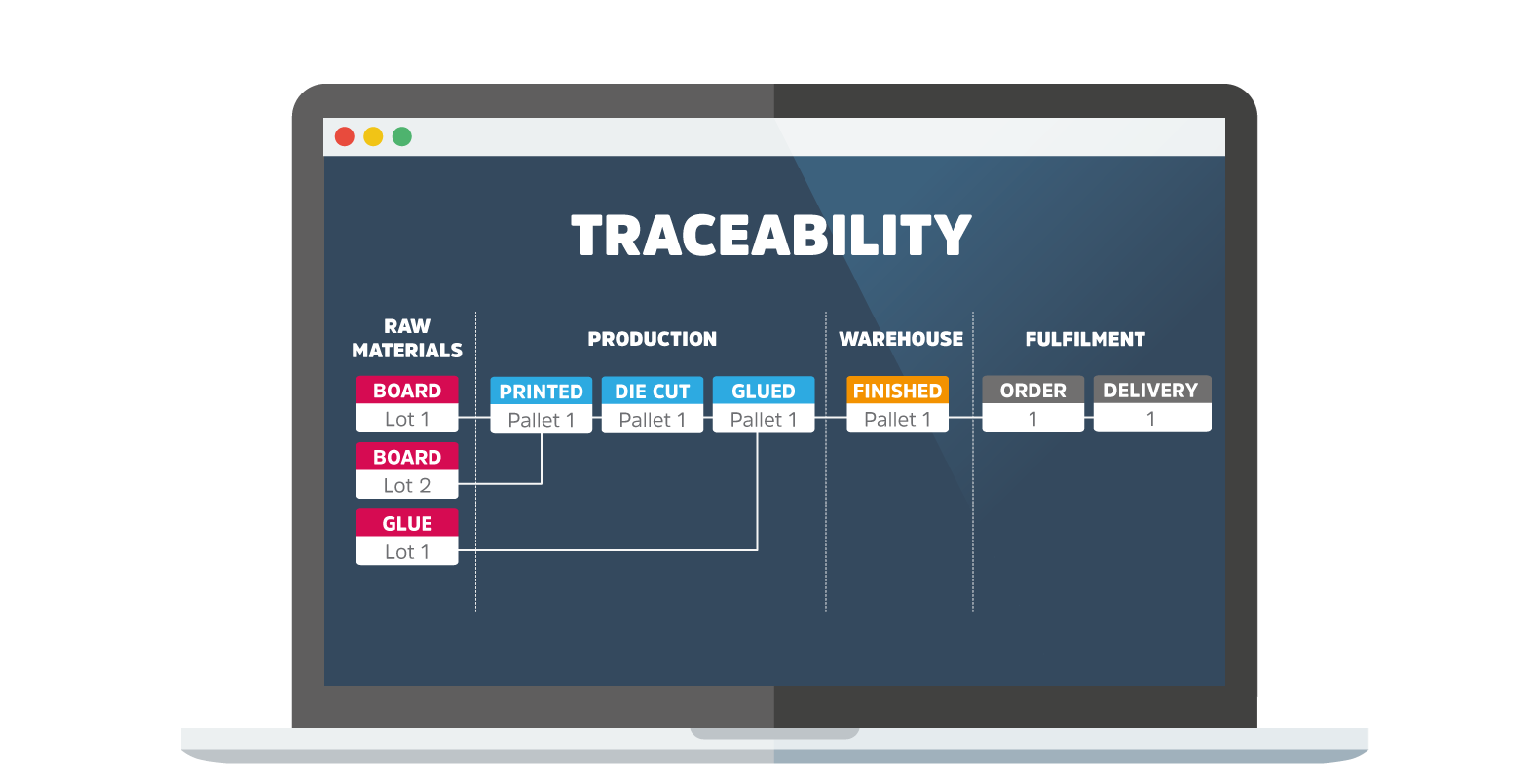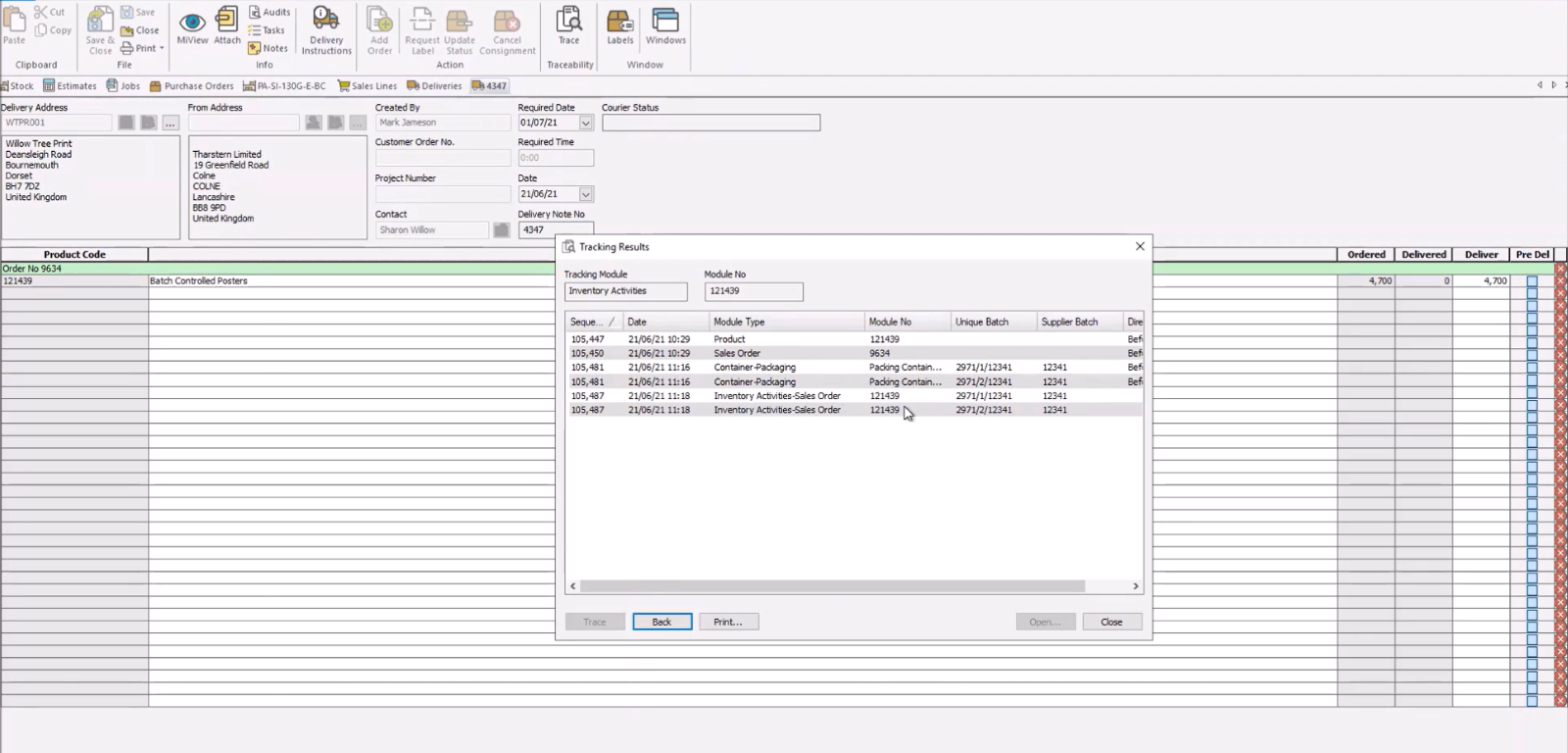Did you know that your print MIS can help you achieve traceability throughout your entire production cycle?
Those of you with customers in the pharmaceutical and food industries especially will know that inventory traceability is an increasingly important requirement, so it makes sense to use your MIS to help you meet these requirements.
Every MIS is different, but here’s 4 ways that the Tharstern Desktop software helps you achieve this.
1. Helps you record and track raw material batches for goods received
Using the Purchase Order features of Tharstern Desktop, you can record and track raw material batches from vendors when you receive them. You can assign the following details, making tracking much easier:
- Warehouse locations
- Supplier batch numbers
- No. of pallets received
- No. of sheets per pallet

You can then see all the batch references associated with each transaction of that material in the activity tab of the stock record.

2. Allows you to capture the batch information of materials used in each job
Once received materials have been recorded through batch control and the locations have been allocated, you can then issue stock and quantities to specific jobs. That way, you’re able to track which batches have been used in which job.
You can use shop floor data capture devices to achieve this, or you can record this in the office using the main Tharstern Desktop software.
3. Identifies which operator/operation used which materials
Using the Shop Floor Data Capture add-on tool for Tharstern Desktop, you can create “containers” to track which materials have been used for a job, from which batch and what quantity.
A container is another name for a pallet and is defined as anything that contains either WIP or a Finished Good. Perhaps a box, tote bin, pallet or truck.

These containers are then referenced against the job within Tharstern Desktop and users can input how many products were produced against these containers.
If you’ve produced multiple variations for an order being sent to multiple locations, then you can also link each of those containers to a different delivery, making it easier to trace back to which batch of material was used.
4. Quickly identify jobs affected by quality issues
On the off chance that a customer comes back to you about issues against a particular delivery note, you can easily identify which batch of products were used for that job and all previous touchpoints it had during production.
You can also see other jobs that used those batches and contact all other customers that might be affected by the issue.

This is also helpful if stock suppliers recall material you’ve used for jobs already delivered. You can see which customers have received this material within their order and proactively contact them to correct any issues.
In summary...
By utilizing traceability capabilities within your MIS, not only can you gain better insight into your operations and ensure quality control, you can also improve your CX by being more transparent with your customers.
What are you waiting for? Start leveraging the powers of your print MIS today!